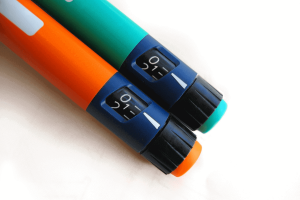All About the Paleo Diet and How It Can Affect Your Diabetes
Thanks to well-known social media sites like Pinterest, different diet trends are becoming more widespread than ever before. Case in point: The paleo diet. Browse any bookshop, cooking store, or recipe website, and you’re almost guaranteed to find information about “going paleo” and how it can help you lose weight, improve digestion, build muscle, and boost energy. New studies even show that adopting a paleolithic diet can help people with diabetes lower their blood sugars and risk of cardiovascular disease. But are the benefits really worth all the hype? And how can eating a paleo diet affect your diabetes?
What is the paleo diet?
Also called the caveman diet, the paleo diet is made up of foods eaten by some of the world’s earliest humans. Ever hear of the adage, “Eat what your great grandmother ate”? The paleo diet takes that advice to the max. Think: Eat what your great, great, great, great, great, great, great, great, great, great, great, great, great grandmother ate. The goal of the diet is to ditch modern processed, chemically-manufactured foods in exchange for more healthful and natural choices. The paleo diet places an emphasis on fresh produce, lean meats, seafood, nuts, seeds, and healthy fats, while cutting out dairy, grains, legumes, starches, processed sugars, and alcohol. As a result, people are expected to avoid today’s conditions that didn’t plague our early ancestors–ones like heart disease, diabetes, and cancer.
The Pros
The paleo diet has been shown to help people with diabetes keep their blood sugars in check, while lowering their blood pressure and cholesterol levels to boot. A 2011 study at the University of California San Francisco saw better blood sugar and blood pressure changes in a group of people who followed a paleo diet, compared to the traditional diabetes diet recommended by the American Diabetes Association.
Researchers aren’t completely sure about why the paleo diet has so many health benefits for people with diabetes. Some doctors believe it’s because not all carbs are created equal. This means that carbs from fruit and vegetables contain different things than the carbs found in cereals and breads, or the carbs that have been shown to raise blood sugar levels. By focusing on lean protein, the paleo diet also aids weight loss–it takes less fat and calories to feel full.
The Cons
Let’s face it: The paleo diet is restrictive. Cutting out sugars and alcohol can be difficult if you’re used to eating them frequently. It’s a prime opportunity for cravings to sneak in and grind your progress to a halt. In addition, by removing dairy and starches from your diet, you’re missing out on nutrients from good-for-you foods such as sweet potatoes, cheeses, and yogurt. Finally, the paleo diet cuts out high-sugar foods that can be beneficial when your blood sugar drops suddenly. Those emergency hard candies in your handbag or apple juice juicebox at the gym are big paleo no-nos.
The Bottom Line
Even though it may promise to, no diet works perfectly for everyone. If you’re struggling to maintain your blood sugars or want to make changes to your eating plan, talk to your doctor first about what steps would be best for you.
Featured photo courtesy of Paleo Dulce on Flickr




